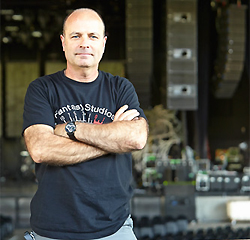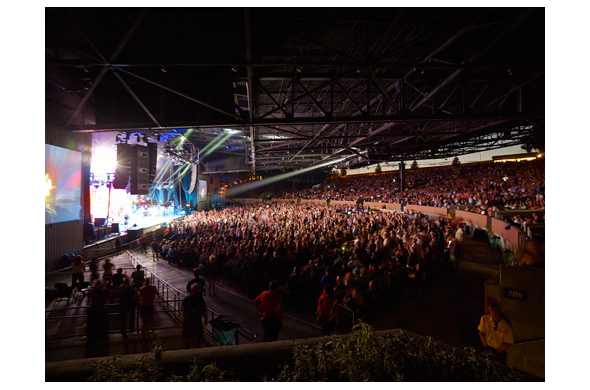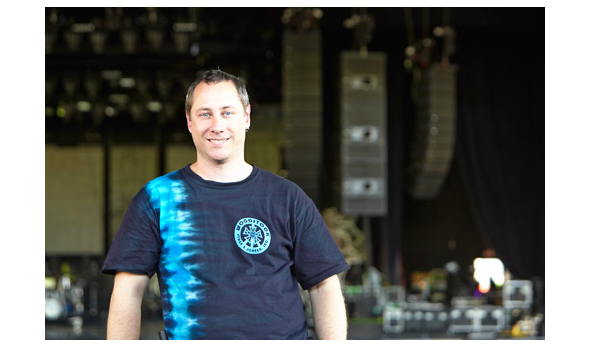
BB: Not all PA systems “translate.” Can you walk us through what usually happens with a “typical” PA system?
JY: Many sound systems are far from “transparent” or “linear,” but instead carry their own “signature” sonic qualities that are favored by some FOH engineers.
Much like Strat and Les Paul guitars each has its own individual qualities—with another level of difference when played through a Fender or Marshall amp—PA systems today still sound a little bit different from each other.
Therefore engineers have to creatively adopt their own methods to attain the desired result.
BB: How do FOH engineers and system techs handle sound systems that don’t “translate”?
JY: When a sound system colors the sound of your mix in comparison to what’s heard through quality headphones or studio monitors, we then have to alter how we tune and mix the system.
For example, if the system is not capable of producing the extreme highs and lows that are present in the console mix, or add harmonic overtones or distortion, then the system engineer or FOH mixer has to start “fudging” things to keep the integrity of the mix intact.
This also applies to stereo imaging and perceived depth of the mix. It’s a roundabout way to “morph” the console mix to cater to the sonic signature of the PA system and its characteristics. That’s why (Meyer Sound) LEO with its precise translation is such a different animal. I can approach my mix with the confidence that the sound system will give me a neutral palette to work with.
Knowing that the smallest details of my mix will be translated as accurately as one could hope gives me a lot of incentive to really dive into the tones and textures of each instrument. The result is a very transparent, un-colored reproduction of what the console is sending.
BB: Taking Journey as an example, how does “translation” from studio to live apply?
JY: Journey’s music is very rich and complex with lots of layers of guitars, keyboards, and a solid foundation of drums and bass. Also, the lead and background vocals are extremely important, so emulating the placement of each instrument and vocal relative to the albums is a lofty goal. Working in a studio control room on the front end allowed me to tweak the mix so it’s as good as it can be.
The LEO system simply and consistently reproduces my mix and all its nuances at high SPLs, despite the chaotic concert environments. I can occasionally record the shows in multitrack, play back through the console, and touch up the mix in headphones, knowing that when I open up the full system, the EQ and tonality choices will be accurately translated. I don’t have to compensate for speaker “peculiarities” with my console mix, and that’s fantastic.
With LEO’s clarity, any space I can create in the mix has a chance of making it through the muck the venue creates. On open-air days, it’s stunning how crystal clear the system sounds. It’s funny, but I find myself sometimes applying additional FX and adding a little “growl” to fill in the spaces a bit as it can be a little “too real.”
BB: What does the touring audio team do during setup of each show to make sure that the system translates?
JY: Careful system design and implementation. System tech Greg Mahler (pictured below) and I work as a team to make measurements and EQ the system to achieve a flat transfer function from around 300 Hz and up. We time-align the subs to match the phase angle of the LEO, and then bring them up to extend the low end of the main PA.
We take more measurements to blend in the side arrays and all of the front fill zones, and then play some tunes and walk around. During the show, I occasionally call out a frequency or two that requires adjusting, and then Greg grabs the tablet and walks the venue to see if any of the zones need touching up.


